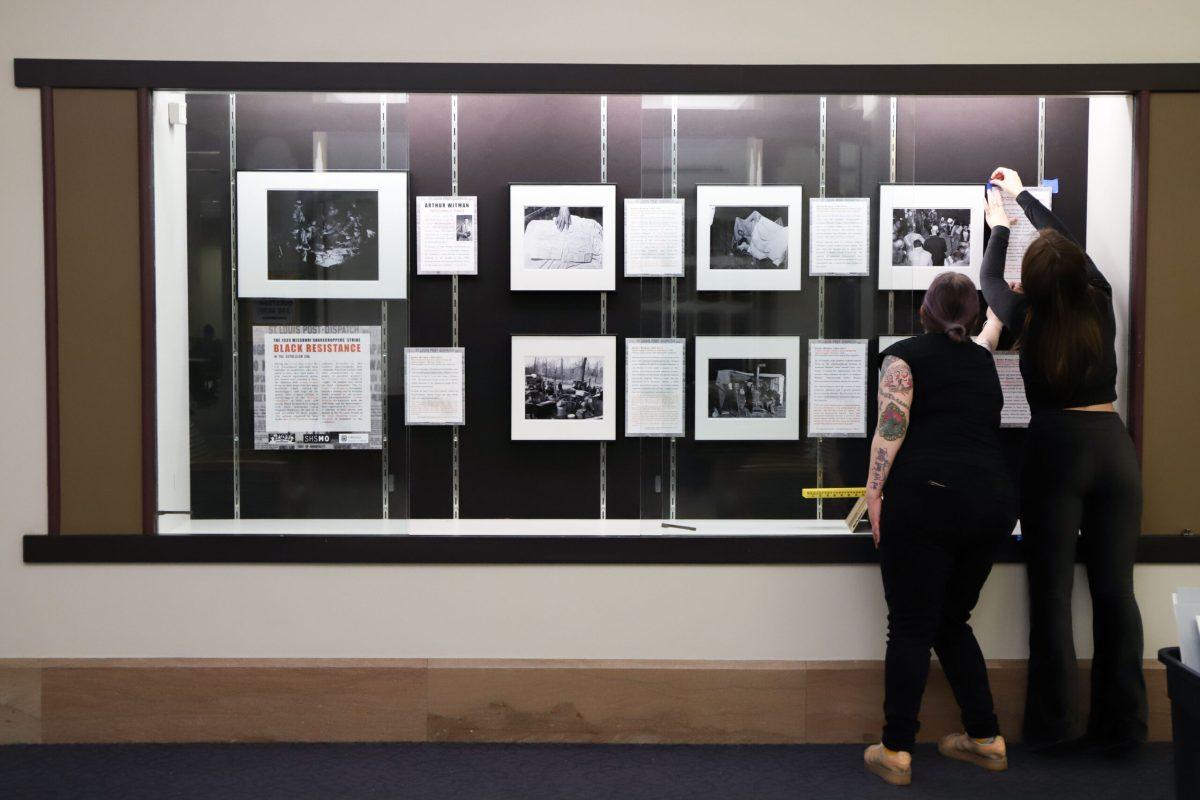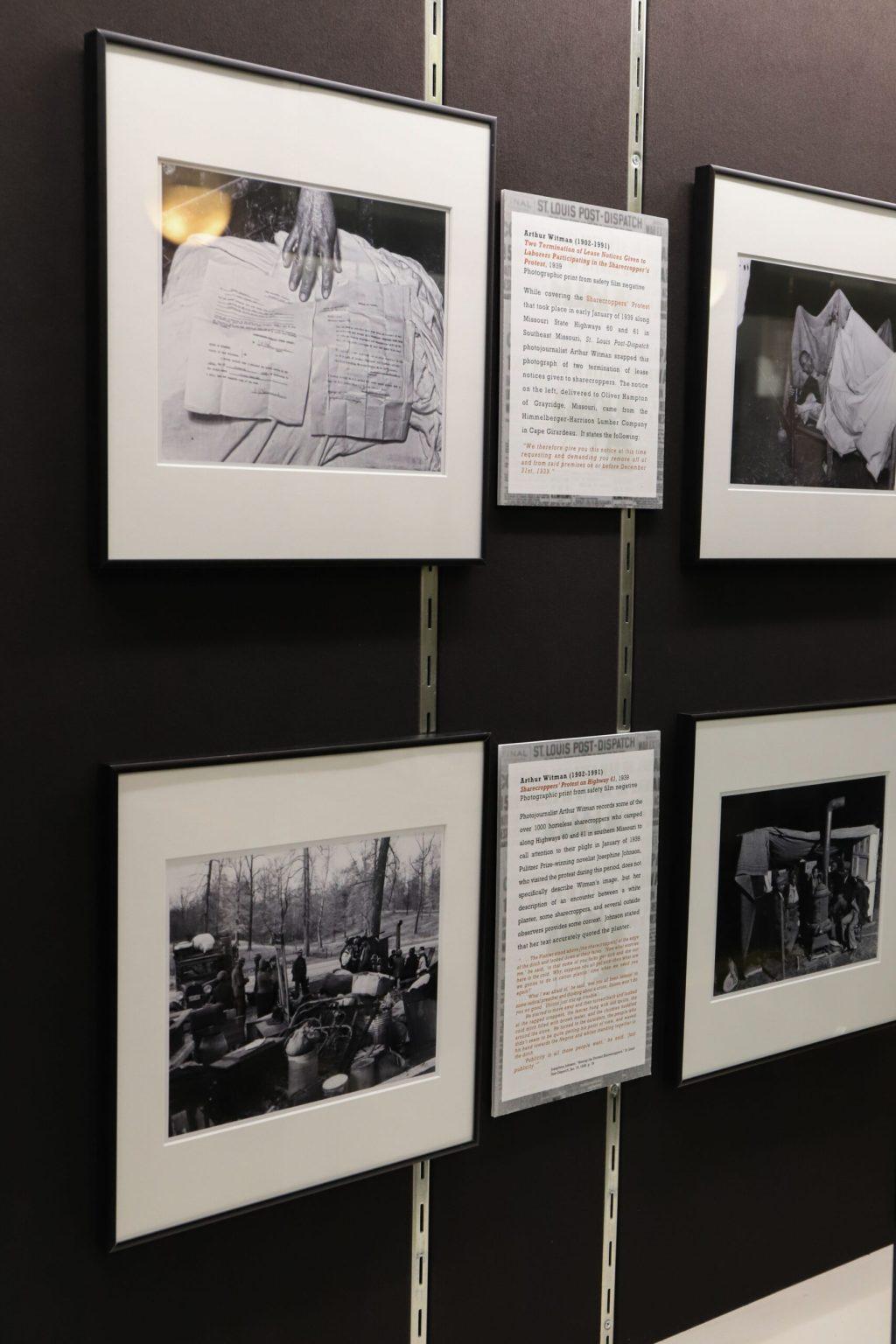
As Black History Month begins, the State Historical Society of Missouri opened an exhibit in Ellis Library relating to this year’s theme.
On Monday, Feb. 6, the State Historical Society of Missouri opened the Missouri Sharecroppers Strike: Black Resistance in Depression Era Exhibit on the first floor of Ellis Library. The exhibit will be on display through May 21.
The exhibit features photographs taken by Arthur Witman, a former photographer for the St. Louis Post-Dispatch, as well as various articles and clippings from newspapers at the time of the 1939 sharecropper strike. These artifacts illustrate the struggles that sharecroppers faced during the resistance.
The theme of this year’s Black History Month is Black Resistance — a theme evident in this strike. While sharecroppers came from all backgrounds, the majority of sharecroppers affected were Black people living in the bootheel of Missouri, which had some of the most fertile land for farming.
The strike, initiated by the Rev. Owen Whitfield, was the result of the Agricultural Adjustment Act of the New Deal. The federal program paid farmers not to grow as many of certain crops so their supply would decrease, thus increasing the price.
This was supposed to help both the farm owners and the tenant farmers, also known as sharecroppers. As more money would be made, this was supposed to result in the sharecroppers receiving more subsidy for their work.
However, according to Greig Thompson, an art collections manager at the State Historical Society of Missouri, many of the landowners “got a little bit greedy” and realized that with less crops being grown, they could just kick the tenant farmers off their land, leaving them with no home. And so the strike began, where a large number of sharecroppers began living on the side of highways in southeast Missouri with their belongings to show the hardships they were enduring.
 Part of the Missouri Sharecroppers Strike Exhibition collection of photo hangs in the Ellis Library in Columbia, MO on Feb. 6th, 2023.
Part of the Missouri Sharecroppers Strike Exhibition collection of photo hangs in the Ellis Library in Columbia, MO on Feb. 6th, 2023.
“Of course, the authorities weren’t real happy with this because, among other things, it didn’t look good,” Thompson said. “So, eventually what happened was some land was procured where they could set up a community called Cropperville.”
Cropperville provided land for these former tenant farmers and was made up of homes built from scratch. It resembled many of the Hoovervilles around the country at the time of the Great Depression.
Cropperville was located about 10 to 15 miles southwest of Poplar Bluff, Missouri, but it is no longer a town today. Some remnants still exist such as graveyards, although even burial sites like these are not concentrated in one location.
More information on this historic resistance may be found at the exhibit throughout the remainder of the semester. Additionally, Joan Stack, SHSMO’s curator of arts collections, will give a presentation on the strike on Feb. 22 at 2:30 p.m. in room 114A of Ellis Library.
Edited by Zoe Homan | [email protected] edited by Lauren Courtney